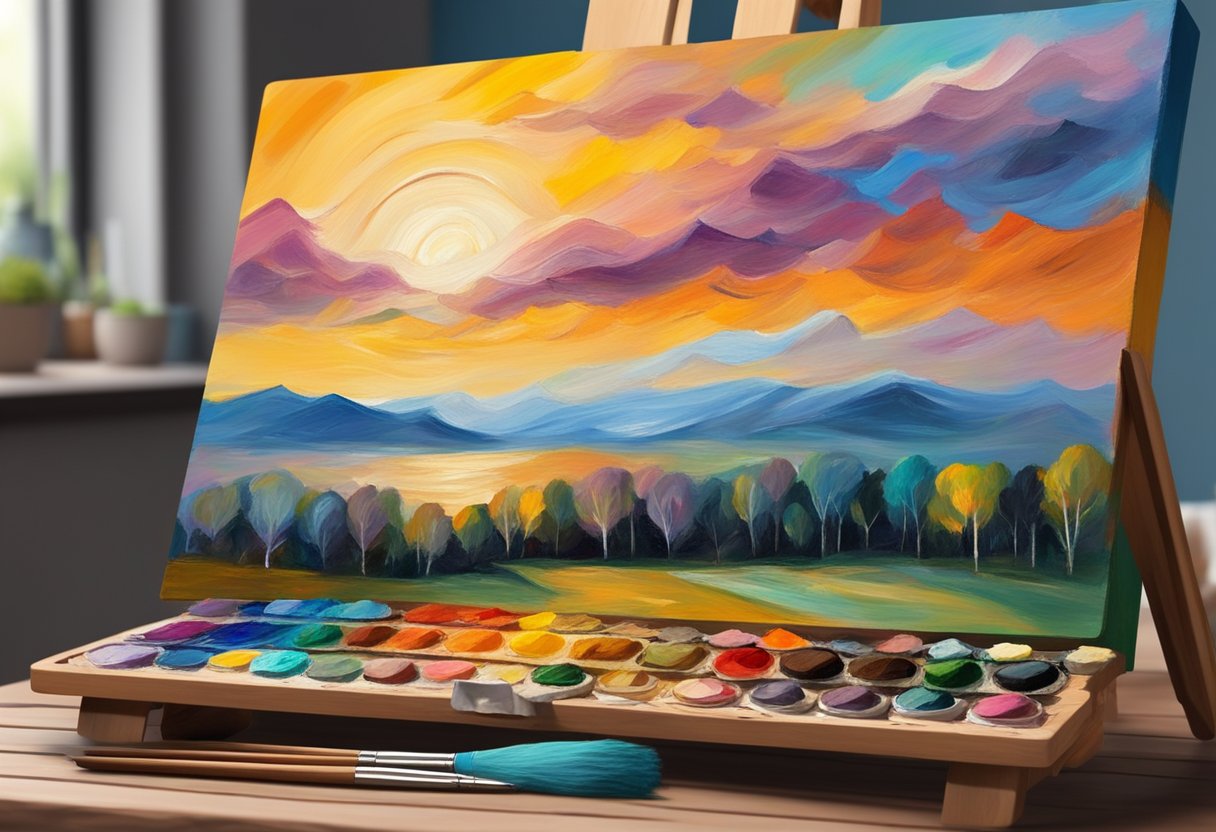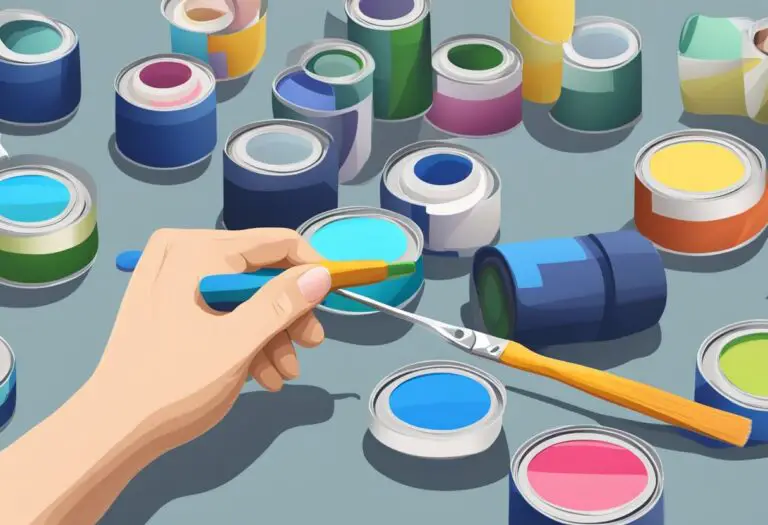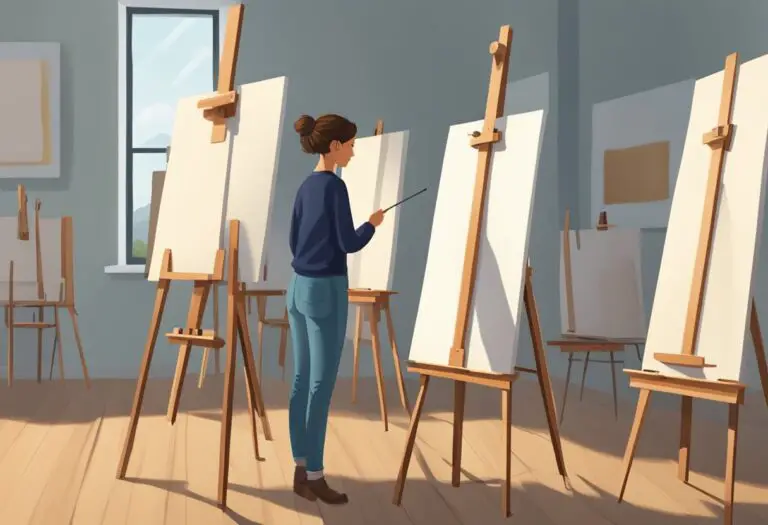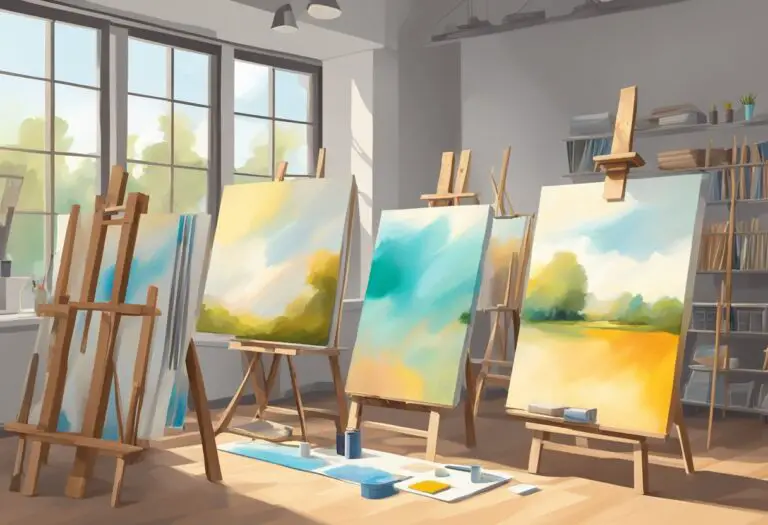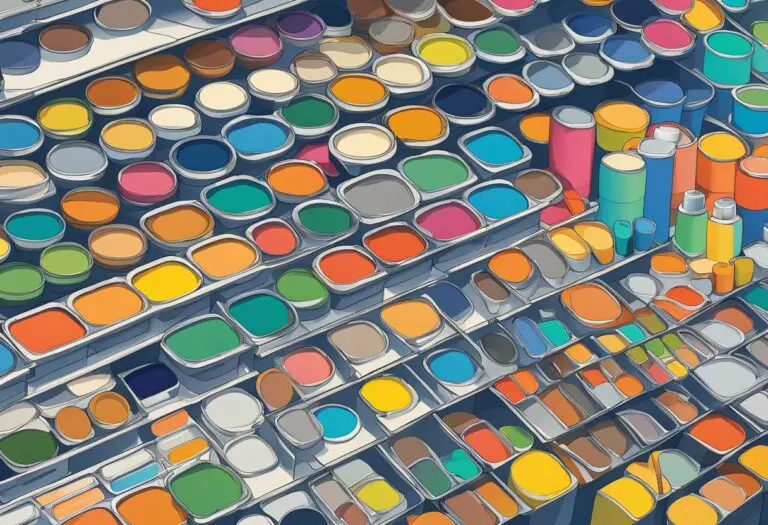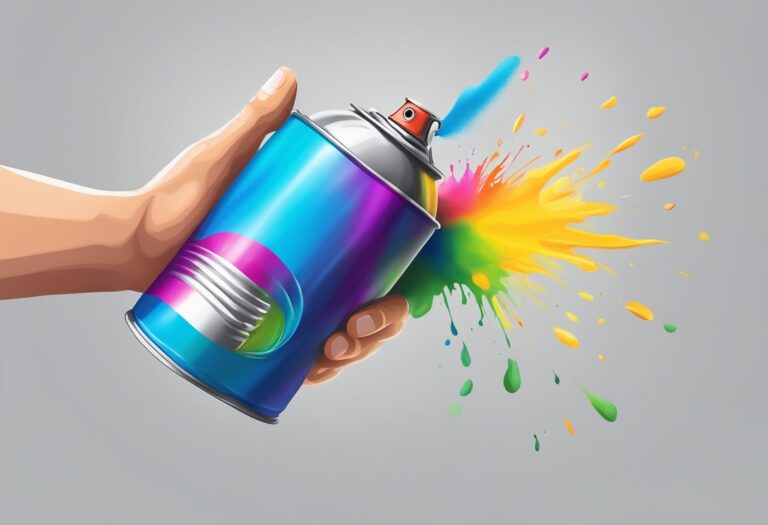Exploring Different Painting Mediums
Have you ever found yourself captivated by the vibrant colors and expressive strokes of a painting? Perhaps you’ve stood in awe in front of a masterpiece, wondering how the artist brought their vision to life. Painting is a form of art that allows us to convey our emotions, thoughts, and experiences through brushstrokes and pigments. It is a window into our souls, a way to communicate and connect with the world around us.
To truly unlock the full potential of your artistic journey, it is essential to explore the vast realm of painting mediums. Each medium offers a unique set of characteristics, techniques, and possibilities for self-expression. Whether you’re an aspiring artist or a seasoned painter, delving into different painting mediums will open doors to endless creative opportunities.
In this in-depth guide, we will take you on a journey through the diverse world of painting mediums. From the timeless elegance of oils to the sheer vibrancy of acrylics, we’ll explore the qualities, techniques, and applications of each medium. Together, we will discover how watercolors can create delicate and translucent effects, and how combining various mediums in mixed media art can result in stunningly textured masterpieces.
Throughout this article, we’ll also provide valuable insights into selecting the right artist materials, mastering creative techniques, and caring for your artworks. We’ll even uncover current trends in the art scene, offering a glimpse into exciting innovations that can inspire and invigorate your artistic practice.
So, whether you’re drawn to the creamy texture of oils, the versatility of acrylics, or the ethereal beauty of watercolors, join us as we embark on a journey of exploration and self-discovery through the vibrant world of painting mediums.
Understanding Acrylics
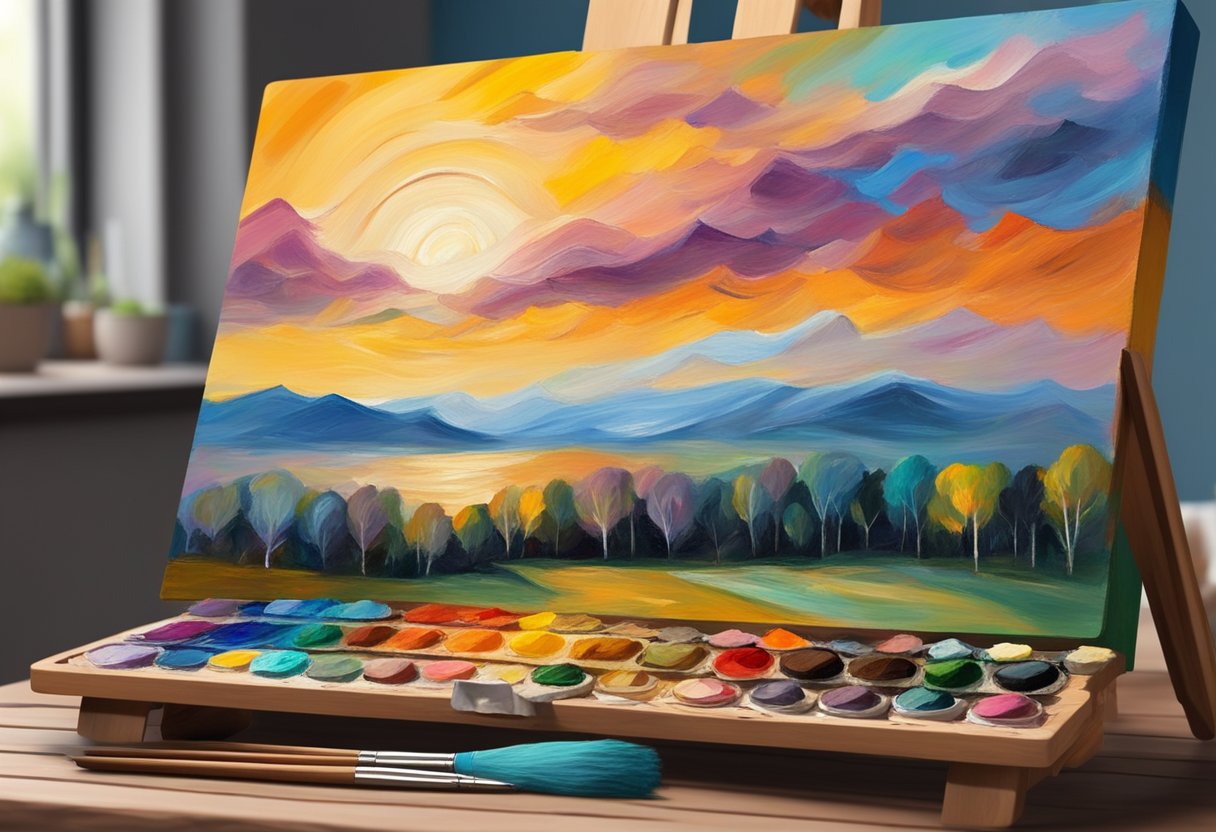
Acrylics are a versatile and popular painting medium among contemporary artists. They offer a wide range of advantages that make them a go-to choice for many art enthusiasts. Understanding the characteristics and uses of acrylic paints is essential for artists looking to explore this medium’s full potential.
One standout feature of acrylics is their quick drying time. Unlike oil paints, which can take days or even weeks to dry, acrylics dry rapidly, allowing artists to work efficiently and complete their artworks in a shorter timeframe. This is particularly helpful for artists who prefer to work on multiple pieces simultaneously or have limited time for their creative pursuits.
Another advantage of acrylics is their versatility. Acrylic paints can be applied in thin washes or built up in thick, impasto layers, offering artists endless possibilities for creating texture and depth. Artists can also experiment with different techniques such as glazing, dry brushing, and wet-on-wet to achieve various effects with acrylics.
“Acrylics are a game-changer for me. Their quick drying time allows me to work spontaneously and confidently, and the vibrant colors never fail to impress.”
Acrylics are available in a wide array of colors, including opaque and transparent options, making them suitable for both realistic and abstract styles of painting. They can be easily mixed together to create a vast range of hues, and their color consistency remains stable when dry, ensuring the longevity of artworks.
When working with acrylics, artists have the flexibility to paint on various surfaces, including canvas, paper, wood, and even glass. This versatility opens up endless opportunities to explore different textures and experiment with mixed media techniques.
To get started with acrylic painting, artists need a few essential art supplies. These include:
- Acrylic paints in a range of colors
- Paintbrushes of different sizes and shapes
- A palette for mixing colors
- A water container for cleaning brushes
- A surface to paint on, such as canvas or paper
Artists can find a wide selection of high-quality acrylic paints and art supplies from trusted brands such as Liquitex, Golden, and Winsor & Newton. These brands offer a range of options to suit different budgets and preferences, ensuring that artists can find the perfect materials to fuel their creativity.
Whether you’re a seasoned artist or just starting your artistic journey, exploring acrylic paints can add a new dimension to your creative process. The versatility, quick drying time, and vibrant colors of acrylics make them a valuable addition to any artist’s toolkit.
Exploring Oils
When it comes to painting mediums, one cannot overlook the timeless beauty and versatility of oils. Oil paints have been used by artists for centuries, and their unique qualities continue to captivate artists around the world. With their slow drying time, blending capabilities, and the rich textures that can be achieved, oils offer a world of creative possibilities.
Slow Drying Time: One of the distinguishing features of oil paints is their slow drying time. Unlike acrylics or watercolors that dry quickly, oils remain wet for a longer period, allowing artists to work with them for extended periods. This slow drying time provides artists with the flexibility to blend colors and create smooth transitions, resulting in a more realistic and visually pleasing outcome.
Blending Capabilities: Oils are known for their exceptional blending capabilities. Artists can easily blend different colors together on the canvas, creating seamless transitions and gradients. This blending technique adds depth and dimension to the artwork, making it visually striking and captivating.
Rich Textures: Another remarkable quality of oil paints is the ability to create rich textures on the canvas. Due to their thick consistency, artists can apply oil paints in thick impasto strokes or build up layers of paint, resulting in three-dimensional textures. This textural element adds tactile interest and visual complexity to the artwork, making it stand out.
Oil paints give artists the freedom to explore and experiment, whether it’s with color mixing, brushwork, or creating different effects. The slow drying time allows artists to work at their own pace, while the blending capabilities and rich textures open up endless possibilities for creative expression.
Working with Watercolors
Watercolors are an incredibly versatile and beloved painting medium known for their transparent and subtle effects. Artists of all levels appreciate the delicate and ethereal nature of watercolors, which allow for the creation of beautiful washes, nuanced details, and vibrant color blends.
To successfully work with watercolors, artists need a few essential supplies. Here are some important materials to consider:
1. Quality Watercolor Paints: Invest in professional-grade watercolor paints for the best results. High-quality paints offer vibrant pigments and better lightfastness, ensuring that your artwork stands the test of time.
2. Brushes: Different brushes produce different effects. Round brushes are excellent for creating controlled strokes and details, while flat brushes are well-suited for washes and covering larger areas. Experiment with various brush sizes and shapes to achieve your desired effects.
3. Watercolor Paper: Watercolor paper is specially designed to hold the water and paint without warping or bleeding. Look for papers that are acid-free and have a rough or textured surface to enhance the watercolor’s unique characteristics.
“Watercolors have a magical quality that allows the paint to interact with the water and paper in unpredictable and beautiful ways.” – Artist statement
4. Palette: Use a palette to mix and dilute your watercolors. Ceramic or plastic palettes with separate wells for each color make it easier to keep your colors clean and organized.
5. Masking Fluid: Masking fluid is a helpful tool for preserving specific areas of your painting from being painted over. Apply it to the paper before painting, and once dry, it creates a barrier that prevents the paint from adhering to those areas.
Techniques for Watercolor Painting
Watercolor techniques involve handling the medium in unique ways to achieve various effects. Here are a few popular techniques:
- Wet-on-Wet: Wetting the paper before applying watercolor paint creates soft and diffuse washes with blending capabilities.
- Dry Brush: Using a slightly dry brush on dry paper produces textured and detailed brushstrokes.
- Glazing: Applying transparent layers of watercolor over dry layers creates depth and dimension in the painting.
- Color Lifting: Dabbing a clean, damp brush or sponge onto the wet or dry paper can lift or remove some of the pigment, creating highlights or correcting mistakes.
With practice and exploration, artists can develop their own unique style and master these techniques to create stunning watercolor artworks.
Here is an example of a table comparing different watercolor paint brands:
| Brand | Pigment Variety | Lightfastness | Price Range (per tube) |
|---|---|---|---|
| Winsor & Newton Professional Watercolors | Wide range of pigments | Excellent lightfastness | $$$ |
| M. Graham Artists’ Watercolors | High pigment concentration | Excellent lightfastness | $$ |
| Schmincke Horadam Aquarell Watercolors | Extensive selection of colors | Very good lightfastness | $$$ |
Remember, mastering watercolors requires time, patience, and experimentation. Embrace the fluidity of the medium and let your creativity flow with each brushstroke.
Embracing Mixed Media
Mixed media art is an exciting and innovative approach that combines various painting mediums, art supplies, and creative techniques to create unique and visually textured artworks. By merging different materials such as paints, collage elements, and found objects, artists can achieve stunning results that go beyond traditional painting methods.
One of the advantages of working with mixed media is the endless possibilities it offers for self-expression. Artists can experiment with different combinations of mediums, allowing them to create diverse textures, dimensions, and effects in their artwork. The juxtaposition of different materials adds depth and interest, giving the artwork a rich and layered appearance.
Artists often incorporate painting mediums such as acrylics, watercolors, and oils into their mixed media pieces. Each medium brings its own unique properties and characteristics, adding to the overall visual impact of the artwork. Additionally, artists can use a wide range of art supplies and tools, including brushes, palette knives, stencils, and more, to achieve the desired effects.
One popular technique in mixed media art is collage, where artists combine various images, papers, and other elements to create a cohesive composition. Collage allows artists to incorporate a variety of textures, colors, and patterns into their artwork, resulting in visually dynamic pieces.
Another creative technique commonly used in mixed media is layering. Artists build up layers of different mediums and materials, creating depth and complexity in their artwork. This technique allows for experimentation with transparency, opacity, and texture, resulting in highly expressive and visually engaging pieces.
Furthermore, artists can incorporate found objects, such as fabric, metal, or everyday items, into their mixed media pieces. These objects add a sense of uniqueness and personal meaning to the artwork, further enhancing the creative narrative.
Embracing mixed media opens up endless possibilities for artists to explore their creativity and add depth to their artwork. By combining various painting mediums, art supplies, and creative techniques, artists can craft visually intriguing and emotionally resonant pieces.
| Advantages | Techniques | Materials |
|---|---|---|
| Endless possibilities for self-expression | Collage | Acrylics |
| Rich and layered appearance | Layering | Oils |
| Visually dynamic pieces | Texture | Watercolors |
| Unique and personal meaning | Found objects |
Navigating Artist Materials
When it comes to creating artwork, choosing the right artist materials is crucial for achieving desired results. From brushes to canvases, each tool plays a vital role in the artistic process. Understanding the diverse range of available art supplies allows artists to make informed decisions based on their chosen painting medium and preferred style.
Brushes for Every Stroke
One of the most important artist materials is a set of high-quality brushes. Each brush type offers a unique application technique and can greatly impact the overall look and feel of a painting. Here are a few commonly used brush types:
- Flat brushes: Ideal for precise lines and broad strokes, flat brushes work well with acrylics and oil paints.
- Round brushes: Perfect for blending, detailing, and creating smooth curves, round brushes are versatile and work with various painting mediums.
- Fan brushes: With their delicate bristles arranged in a fan shape, these brushes are excellent for creating texture and foliage effects.
Palettes for Mixing Colors
A palette is an essential tool for mixing and blending colors. While there are various types of palettes available, such as handheld and studio palettes, the choice depends on personal preference. Some artists prefer traditional wooden palettes, while others opt for lightweight and easy-to-clean plastic palettes.
Choosing the Right Canvases
When it comes to canvas painting, the choice of canvas greatly influences the final artwork. Different types of canvases offer diverse textures, durability, and absorption qualities. Here are a few common canvas options:
- Cotton canvas: Lightweight and versatile, cotton canvases are widely used and suitable for a variety of mediums.
- Linens canvas: Known for their smooth and durable texture, linen canvases are favored by professional artists.
- Canvas boards: These rigid panels are an excellent choice for beginners or artists looking for a portable option.
“The right artist materials can elevate an artist’s work to new heights, allowing them to express their creativity with confidence.”
Essential Painting Accessories
In addition to brushes, palettes, and canvases, there are several other artist materials that can enhance the painting experience. These include:
- Easels: An easel provides a sturdy and adjustable work surface, allowing artists to paint comfortably at various angles.
- Palette knives: These versatile tools are used for applying thick layers of paint, creating texture, and scraping paint off the canvas.
- Mediums: Painting mediums, such as gels, varnishes, and thinners, can be added to paints to alter their consistency, drying time, and finish.
By selecting the right artist materials, artists can unlock the full potential of their chosen painting medium and achieve the desired effects in their artwork. Whether it’s creating smooth brush strokes or adding texture and depth to a composition, the quality and suitability of the materials used can make a significant difference in the final result.
Mastering Creative Techniques
In the world of painting, mastering creative techniques is essential for artists to express their unique artistic vision. By understanding and applying various techniques, artists can bring their artworks to life, adding depth, texture, and visual interest. In this section, we will explore some of the most popular creative techniques used in painting, making use of different painting mediums and art supplies.
Glazing
Glazing is a technique that involves layering transparent or translucent paint over previously dried layers to create luminosity and depth. By building up successive glazes, artists can achieve vibrant colors and subtle shifts in tone. This technique is commonly used in oil painting and can also be applied to acrylics and watercolors.
Impasto
Impasto is a technique that involves applying thick layers of paint onto the canvas, creating a textured and three-dimensional effect. It adds a tactile quality to the artwork, allowing viewers to see the physical presence of the paint. This technique is often used in oil painting but can also be achieved with acrylics and even watercolors by using thickening mediums.
Wet-on-Wet
Wet-on-wet, also known as alla prima, is a technique where fresh paint is applied onto still-wet paint. This allows colors to blend and mix directly on the canvas, producing soft transitions and spontaneous effects. It is commonly used in oil painting but can also be explored with acrylics and watercolors.
Dry Brush
The dry brush technique involves using a small amount of paint on a dry brush, creating a textured, scratchy effect. By lightly dragging the brush over the surface, artists can achieve fine details, enhance textures, and create interesting visual effects. This technique is particularly effective in acrylic and oil painting.
“The use of different creative techniques in painting allows artists to push the boundaries of their artistic practice and explore new possibilities. By experimenting with glazing, impasto, wet-on-wet, and dry brush techniques, artists can achieve unique interpretations of their subjects and bring their artworks to life.”
Table: Comparing the Characteristics of Different Creative Techniques
| Technique | Main Characteristics | Application |
|---|---|---|
| Glazing | Builds layers of transparent or translucent paint for luminosity and depth. | Oil, acrylic, and watercolor painting |
| Impasto | Creates thick, textured layers for a three-dimensional effect. | Oil, acrylic, and watercolor painting |
| Wet-on-Wet | Allows blending and mixing of fresh paint for soft transitions and spontaneous effects. | Oil, acrylic, and watercolor painting |
| Dry Brush | Uses a small amount of dry paint for fine details and texture enhancement. | Acrylic and oil painting |
By learning and practicing these creative techniques, artists can expand their artistic repertoire and bring a new level of expressiveness to their paintings. Experimenting with different techniques using various painting mediums and art supplies can lead to exciting discoveries and unique artistic breakthroughs.
Exploring Other Mediums
Beyond the classic mediums mentioned earlier, artists have a plethora of other painting mediums at their disposal. These lesser-known mediums offer unique characteristics and can add an exciting dimension to your artwork. Let’s take a closer look at three such mediums: gouache, encaustic, and pastels.
Gouache
Gouache is a versatile painting medium that combines characteristics of both watercolors and acrylics. It is composed of opaque pigments mixed with a binder, resulting in vibrant and highly pigmented colors. Gouache can be diluted with water to achieve transparent effects similar to watercolors or used straight from the tube for bold, opaque applications. This medium is perfect for artists who want the flexibility to work in both a translucent and opaque style, creating stunning effects in their artwork.
Encaustic
Encaustic painting involves using pigments mixed with heated beeswax as a medium. This ancient technique dates back to ancient Greece and has gained popularity among contemporary artists for its unique textural qualities and rich color saturation. Encaustic paints are applied in a molten state and can be manipulated with various tools before solidifying. The wax layer can also be reworked, carved, or scraped to create intriguing textures and visual depth. Encaustic painting offers endless possibilities for experimentation and exploration.
Pastels
Pastels are a dry medium consisting of powdered pigment mixed with a binder, resulting in a soft and blendable texture. Artists use pastels in various forms, including soft pastels, oil pastels, and pastel pencils. Soft pastels are renowned for their vibrant colors and ability to create luminous effects, while oil pastels offer a creamy consistency and can be used on a variety of surfaces. Pastel pencils are perfect for adding fine details and intricate lines. This versatile medium allows artists to work quickly, layer colors, and achieve a wide range of textures. Pastels are favored by many artists for their rich pigmentation and ease of use.
| Medium | Characteristics | Application Techniques |
|---|---|---|
| Gouache | Opaque, highly pigmented, versatile | Dilute with water, use straight from the tube |
| Encaustic | Textured, rich color saturation | Apply in a molten state, manipulate with tools |
| Pastels | Soft, blendable, vibrant colors | Layering, blending, fine details |
Caring for Artworks
Preserving and maintaining finished artworks is essential to ensure their longevity and aesthetic appeal. By following a few simple steps, artists can protect their creations and ensure that they withstand the test of time. This section will provide practical tips on how to care for and preserve artworks created with different painting mediums, including proper varnishing, framing, and storage techniques.
Varnishing Artworks
One crucial step in preserving paintings is varnishing. Varnishing not only adds a protective layer but also enhances the colors and overall appearance of the artwork. For oil paintings, it is recommended to wait at least six months for the paint to fully dry before applying varnish. Acrylic paintings, on the other hand, can be varnished as soon as they are completely dry, usually within a few days.
When choosing a varnish, opt for a high-quality, archival-grade varnish to ensure maximum protection. Apply the varnish using a soft brush, following the manufacturer’s instructions. It is best to apply several thin coats rather than one thick layer to achieve an even finish.
Framing Artworks
Framing not only enhances the presentation of an artwork but also provides additional protection against environmental factors. When choosing a frame, select one that complements the style and aesthetic of the artwork while providing proper support and protection.
Ensure that the frame is large enough to accommodate the artwork comfortably and that the backing materials, such as acid-free matting and archival mounting boards, are used to prevent any direct contact with the artwork. This will help prevent damage caused by moisture, dust, and physical contact.
Storage and Display
Proper storage and display of artworks are vital to their preservation. It is crucial to protect artworks from direct sunlight, extreme humidity, and fluctuations in temperature, as these can cause fading, warping, and other forms of damage.
Store artworks in a cool, dry place away from any potential hazards or potential sources of damage. Use acid-free archival boxes or sleeves to protect artworks during storage. When displaying the artwork, avoid placing it near heat sources, such as radiators, or in areas prone to high humidity, such as bathrooms or basements.
If you plan to transport or ship an artwork, ensure it is well protected with appropriate packaging materials and consider using professional art transport services to minimize the risk of damage during transit.
In Summary
By following proper care and preservation techniques, artists can ensure that their artworks created with different painting mediums remain intact and visually stunning for years to come. Varnishing, framing, and proper storage are all essential steps to protect artworks from environmental damage and preserve their original beauty. With attention to detail and regular maintenance, artists can enjoy their creations for a lifetime.
Exploring Current Trends
The world of painting mediums is constantly evolving, with new trends and innovations emerging to inspire artists and push the boundaries of creativity. Staying informed about the latest products, techniques, and styles can open up exciting new possibilities for artistic expression. Whether you’re a seasoned artist or just starting your creative journey, exploring current trends in painting mediums can help you stay ahead of the curve and infuse your artwork with fresh ideas.
One notable trend in painting mediums is the rise of eco-friendly and sustainable art supplies. As artists become more conscious of their environmental impact, they are seeking out materials that are non-toxic, ethically sourced, and produced with minimal waste. From recycled paints to plant-based pigments, there are now a wide variety of options available for artists who want to create while minimizing their ecological footprint.
Another trend is the fusion of traditional and digital techniques in painting. With advances in technology, artists can now experiment with digital brushes, textures, and effects to enhance their traditional artworks. Whether it’s incorporating digital elements into a mixed media piece or using digital tools for preliminary sketches and color studies, this blending of analog and digital approaches opens up exciting possibilities for artistic exploration.
“Exploring current trends in painting mediums allows artists to connect with the larger art community and find inspiration from the innovative work being produced.” – Jane Smith, Contemporary Artist
Expressive and abstract styles are also gaining popularity in the world of painting mediums. Artists are embracing bold, vibrant colors, loose brushwork, and dynamic compositions to create visually impactful artworks that convey emotion and energy. These styles encourage experimentation and freedom of expression, allowing artists to break free from traditional guidelines and create unique, one-of-a-kind pieces.
Artists are also pushing the boundaries of traditional painting mediums by exploring unconventional materials and techniques. From using unconventional surfaces such as wood, metal, or fabric to experimenting with alternative tools like sponges, palette knives, or even their hands, these unconventional approaches create texture, depth, and visual interest in a painting.
Lastly, collaboration and community engagement are trends that have taken the art world by storm. Artists are coming together to create mural projects, public installations, and community-based artworks that challenge societal norms and promote positive change. This collaborative approach not only fosters a sense of connection among artists but also allows them to use their creative skills to address important social and environmental issues.
The Future of Painting Mediums
With each passing year, new trends and innovations continue to shape the world of painting mediums. As technology advances, we can expect to see more integration between digital tools and traditional techniques, providing artists with even more opportunities for experimentation and self-expression. Additionally, as sustainability becomes increasingly important, we can anticipate the development of more eco-friendly and environmentally conscious art supplies.
As an artist, staying informed about current trends is essential for staying inspired and expanding your artistic horizons. Whether you’re drawn to the bold and expressive or prefer to explore unconventional techniques, embracing the evolving landscape of painting mediums allows you to connect with the larger art community and find inspiration from the innovative work being produced.
| Trend | Description |
|---|---|
| Eco-friendly and sustainable art supplies | A shift towards non-toxic, ethically sourced materials produced with minimal waste |
| Fusion of traditional and digital techniques | Using digital tools to enhance traditional artworks and create new possibilities |
| Expressive and abstract styles | Bold colors, loose brushwork, and dynamic compositions to convey emotion and energy |
| Exploration of unconventional materials and techniques | Using alternative surfaces, tools, and approaches to create texture and visual interest |
| Collaboration and community engagement | Artists coming together to create joint projects and address social and environmental issues |
Conclusion
Exploring different painting mediums opens up a world of creative possibilities for artists. Whether you choose acrylics, oils, watercolors, mixed media, or other less conventional mediums, each offers its own unique characteristics and techniques to master. By experimenting with different painting mediums, artists can expand their artistic horizons and discover their own unique artistic voice.
The versatility of painting mediums allows artists to achieve a wide range of effects, textures, and styles in their artworks. Acrylics, with their quick drying time and versatility, are a popular choice among artists seeking vibrant colors and fast results. On the other hand, oils offer a slower drying time and the ability to create rich textures and blend colors seamlessly. Meanwhile, watercolors provide a transparent and delicate touch that can add a dreamlike quality to any artwork.
Embracing mixed media techniques allows artists to combine mediums in innovative ways, resulting in visually striking and textured artworks. By incorporating various elements such as collage, found objects, and different painting mediums, artists can create eclectic and personalized pieces that push the boundaries of traditional painting. Furthermore, by mastering creative techniques like glazing, impasto, and wet-on-wet, artists can add depth and dimension to their artworks.
By understanding and exploring various painting mediums, artists can unlock their full potential and express their artistic vision with confidence. So, go ahead and venture into the world of painting mediums – experiment, play, and discover new ways to bring your imagination to life on canvas. The possibilities are endless, and your artistic journey awaits!

